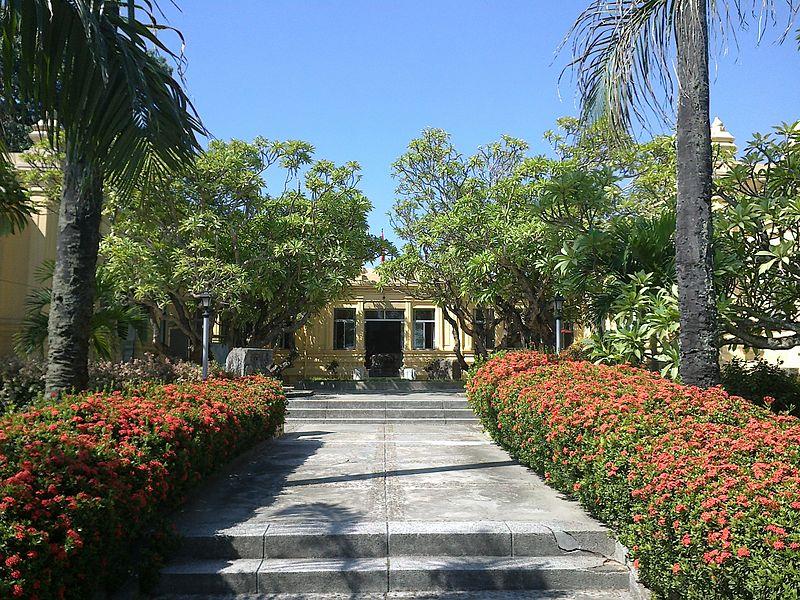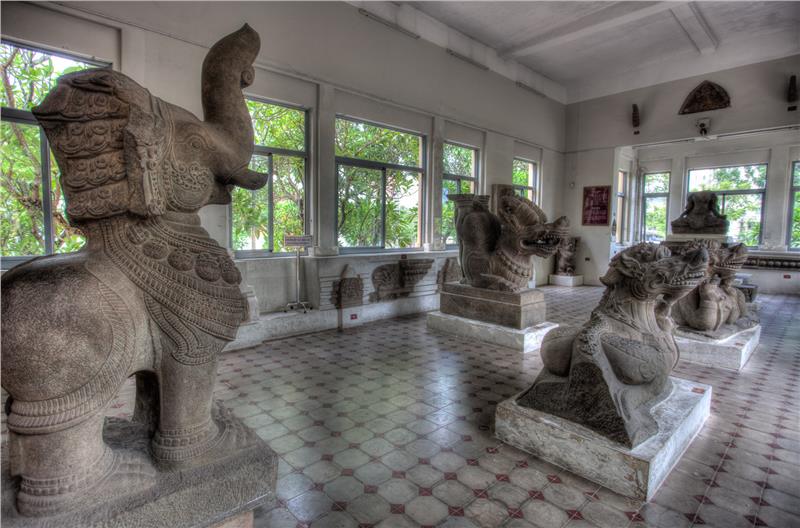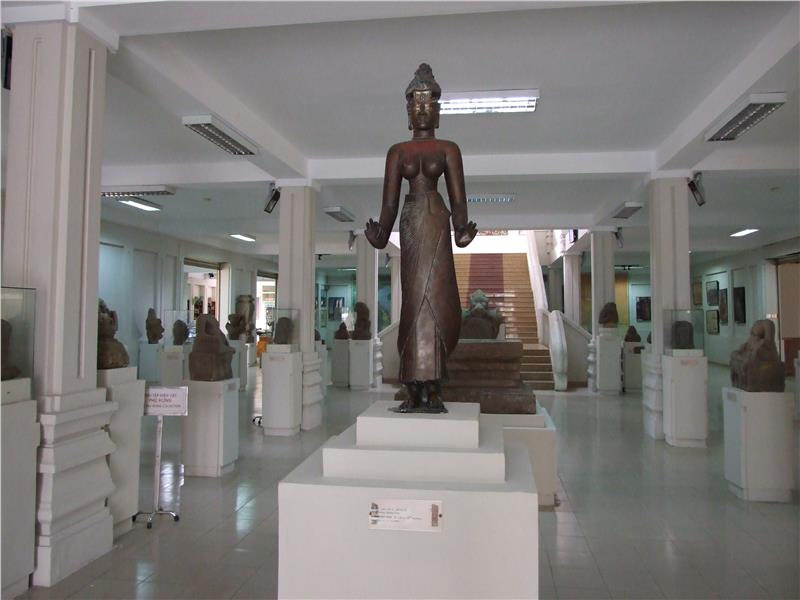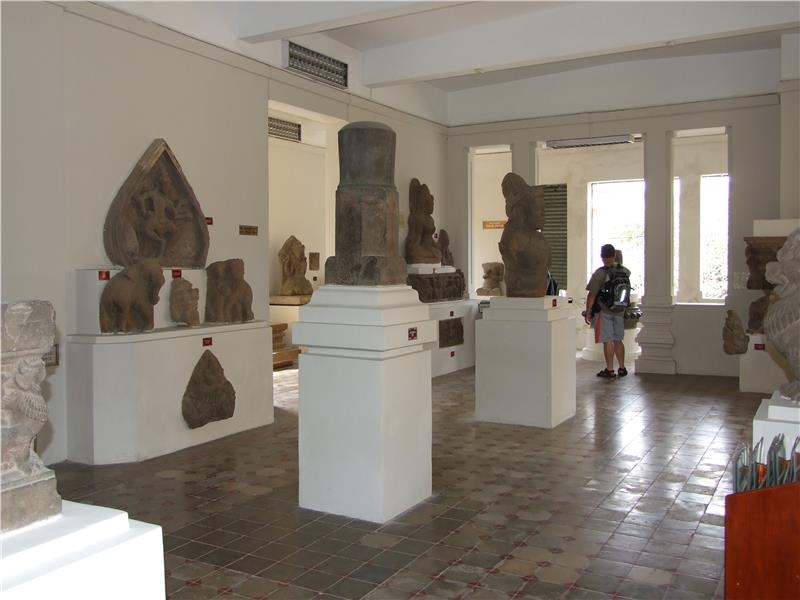Museum of Cham Sculpture, also known as Cham Sculpture Museum is a construction of the French in Da Nang when colonizing Vietnam. It used to collect, store, and display relics on sculpture of the Champa kingdom found in Cham towers and ramparts in the South Central Coast and Central Highlands. The museum houses the world's largest collection of Cham sculpture and is a popular tourist attraction in Da Nang as well.

Located in 2 of the most beautiful streets in Da Nang City, namely Bach Dang Street and Trung Nu Vuong Street, Museum of Cham Sculpture began its construction in July 1915 with the help of French scientists in the Ha Noi-based Ecole Francaise d'Extreme Orient (Far East Institute). The museum was officially inaugurated in 1919. Undergoing many times of restoration and completion, the museum has just owned the perfect appearance as it is today. The museum itself is also a fine example of Cham architecture with its flowing sophisticated lines.
Da Nang Museum of Cham Sculpture is home to nearly 2,000 multi-shaped artifacts, around 500 of which are on display inside the museum, and the rest scattered throughout the campus and are safely stored. Entering the museum campus, with the harmonious combination between Gothic architectures profoundly influenced from the French and unique space of radiating flowers, tourists will actually get amazing experiences. Right in the heart of vibrant Da Nang City, Cham Sculpture Museum seems to offer peaceful moments for tourists as the journey to find remnants of a flourishing kingdom.

Most of artifacts has been arranged correspondingly geographical areas where they were discovered, including gallery of My Son, Tra Kieu, Dong Duong, Thap Man, and corridors of Quang Tri, Quang Nam, Quang Ngai, Kon Tum, Quang Binh, and Binh Dinh. This division makes observant tourists realize typical Cham architectural characteristics in each locality, thanks to influences of the culture and particular lifestyle. Walking through each corridor of Quang Nam, Quang Binh or My Son, witnessing artifacts depicting Shiva, Brahma, and contemplating sophisticated My Son Temple, tourists will admire the creativity of talented ancient artists. Statues of the mascots, Hindu deities and scenes of daily life are elaborately carved, which still has kept their sheer beauty so far. Over many centuries, remnants of a prosperous kingdom still proudly exist.
In particular, the museum was upgraded and extended by the city between 2002 and 2004, with the addition of a new 2-storey building providing another 1,800 square meters. However, the character of the original architecture has been well preserved. Simultaneously, another 150 objects were added to the museum’s exhibits, including many valuable artifacts such as a bronze goddess statue. The new buildings provide more space for displays, storage, a restoration workshop and offices for the staff.

Most existing sculptures in Da Nang Museum of Cham Sculpture are original works on 3 main materials of sandstone, terracotta and copper dating from the seventh century to the fifteenth century which are diverse on artistic styles, shapes, and architecture... It looks like that each work of art here hides its own story and precarious fate like ancient Champa kingdom. Undergoing changes of the time, war-torn vestiges, generations have painstakingly collected and brought under the common roof. It is the systematic collection that turns Champa artworks into new vitality, and affirms its timeless spiritual values. Although profoundly influenced by the architecture and sculpture of the Indian civilization, the Champa had their own vision of life and religion. This brought to their sculpture a subtle and distinct beauty. In particular, Museum of Cham Sculpture is home to 3 national treasures of the Cham culture, namely Tara Bodhisattva Statue, My Son E1 Temple, Tra Kieu Temple. The museum attracts the great number of international tourists from France, India, Korea, and all over the world admiring the precious cultural values.

Visiting the museum, walking into the particular space, tourists will actually shake off all the chaos of the hustling and bustling urban life in order to immerse in the quietness and the nostalgic entangles. Going to Museum of Cham Sculpture is to admire the relentless creativity of the ancient Cham artisans who have carved up timeless masterpieces. Cham Sculpture Museum thus plays an important role in the development of Da Nang tourism.
